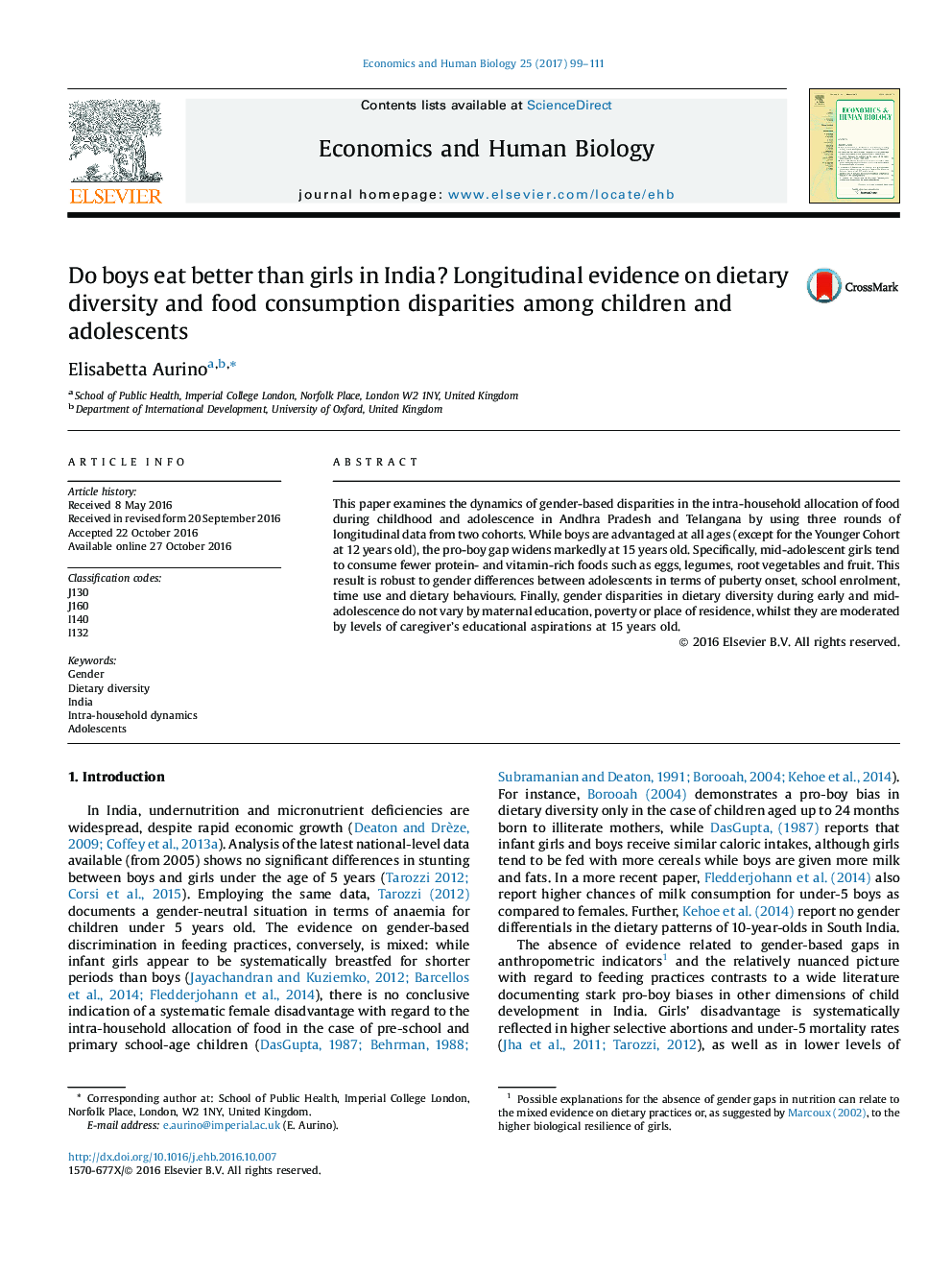| Article ID | Journal | Published Year | Pages | File Type |
|---|---|---|---|---|
| 5056878 | Economics & Human Biology | 2017 | 13 Pages |
â¢I investigate gender disparities in dietary diversity and food consumption among children and adolescents in India.â¢Boys are advantaged at all ages (except 12 years) but the pro-boy advantage widens especially at 15 years old.â¢Adolescent boys are more likely to consume nutritious foods than girls.â¢The gap is robust to gender differentials in puberty, school enrolment, time use and dietary behaviours.â¢Adolescent boys with caregivers that have high education aspirations are particularly advantaged in the intrahousehold distribution of food.
This paper examines the dynamics of gender-based disparities in the intra-household allocation of food during childhood and adolescence in Andhra Pradesh and Telangana by using three rounds of longitudinal data from two cohorts. While boys are advantaged at all ages (except for the Younger Cohort at 12 years old), the pro-boy gap widens markedly at 15 years old. Specifically, mid-adolescent girls tend to consume fewer protein- and vitamin-rich foods such as eggs, legumes, root vegetables and fruit. This result is robust to gender differences between adolescents in terms of puberty onset, school enrolment, time use and dietary behaviours. Finally, gender disparities in dietary diversity during early and mid-adolescence do not vary by maternal education, poverty or place of residence, whilst they are moderated by levels of caregiver's educational aspirations at 15 years old.
